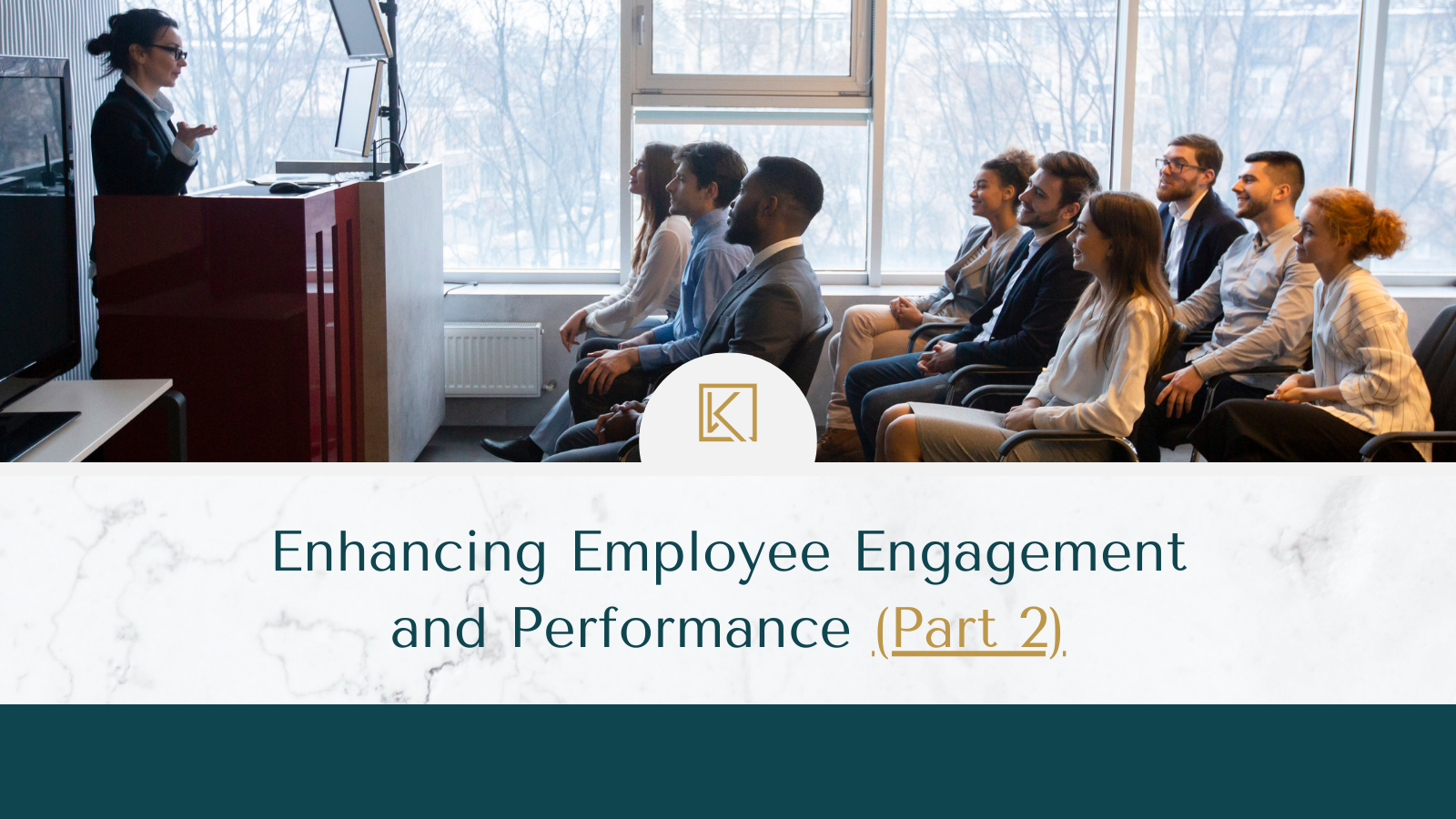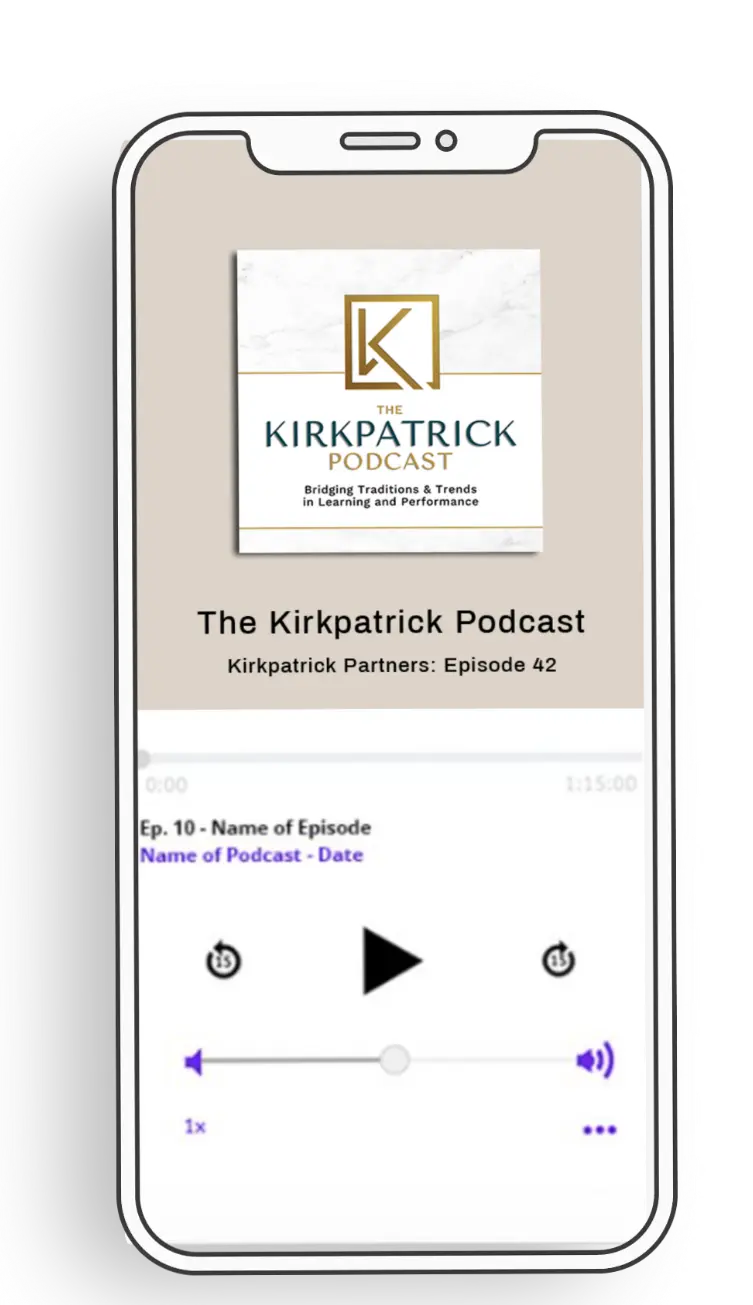Enhancing Employee Engagement and Performance (Part 2)

We’ve all been there—stuck in that uninspiring rut where each workday feels like you’re just going through the motions, even in a job you genuinely care about. When this happens, it can be hard to tap into your full potential and deliver your best work. But what if you had a guide to pull yourself out of that funk? A strategy designed to reignite your passion, boost your motivation, and launch you to new heights? Building on last week’s insights, we’re going deeper into the key drivers that can turn disengagement into dynamic energy. Get ready to explore real-world strategies that will transform your approach to motivation and lead to lasting change in the workplace.
The Power of Public Praise
Public recognition is one of the most potent tools for boosting employee engagement. While private compliments are appreciated, they often don’t have the same lasting impact as being acknowledged in front of peers. Publicly celebrating achievements—whether in meetings, newsletters, or company-wide emails—not only elevates the individual being recognized but also sets a positive example for the entire team. This act of recognition fosters a culture of appreciation and motivates others to strive for excellence, knowing that their hard work won’t go unnoticed.
Public praise does more than just lift spirits—it strengthens the bonds within your team. When successes are celebrated openly, it builds a sense of community and collective pride among employees. This visibility not only highlights individual contributions but also reinforces the team’s shared goals and achievements. The ripple effect of public recognition can lead to greater job satisfaction and a more cohesive, motivated work environment where everyone is eager to contribute their best efforts.
Consistent Performance Check-Ins
Offering praise is just one part of the engagement equation; consistent performance check-ins are equally crucial. Regularly reviewing major projects and initiatives allows managers to provide timely feedback, address challenges, and adjust strategies as needed. These check-ins are not just about keeping tabs—they’re about empowering employees by ensuring they have the support and guidance needed to excel. When employees know their efforts are being noticed and guided, they are more likely to stay motivated and aligned with the organization’s goals.
Beyond feedback, these check-ins serve as crucial touchpoints for reinforcing the connection between individual efforts and the broader company objectives. They create a structured space for employees to discuss their progress, seek advice, and set new targets. This ongoing dialogue fosters a sense of accountability and purpose, helping to keep motivation high. By making these check-ins a regular part of your management routine, you build a supportive framework that encourages continuous improvement and growth.
Fostering a Supportive Community
While managers play a key role in driving engagement, a supportive community within the organization is just as important. Establishing a network of mentors, coaches, and champions provides employees with multiple sources of guidance, recognition, and encouragement. This kind of broader support system helps fill any gaps in feedback or motivation that might arise from day-to-day interactions with direct supervisors. By fostering a culture of mentorship and peer support, you create an environment where employees feel valued and connected on their professional journey.
A strong support network also enhances the sense of belonging and engagement across the board. When employees have access to diverse perspectives and encouragement, they are more likely to feel empowered and inspired. This community-based approach can be particularly beneficial for those who might not have a strong connection with their immediate supervisors, ensuring that everyone has the resources they need to succeed. Building and nurturing these relationships contributes to a more engaged, resilient workforce.
Prioritizing Engagement Over Fire-Fighting
It’s all too easy for managers to get caught up in day-to-day issues, spending more time putting out fires than focusing on long-term engagement strategies. To avoid this common pitfall, it’s essential to prioritize proactive engagement over reactive problem-solving. By cultivating positive working relationships and keeping lines of communication open, managers can address potential issues before they escalate, allowing them to focus more on fostering a motivating work environment rather than constantly dealing with crises.
Shifting the focus from fire-fighting to engagement not only helps in reducing conflicts but also enhances overall productivity. When managers are not bogged down by constant problem-solving, they can dedicate more energy to inspiring and supporting their teams. This proactive approach to management leads to a more stable and productive work environment, where employees feel heard, valued, and motivated to contribute to the organization’s success.
Protecting Your Training Investment
Investing in employee training is just the beginning—protecting that investment is key to sustaining engagement and maximizing returns. After dedicating time and resources to training programs, it’s crucial to reinforce what’s been learned through continuous support and evaluation. Implementing follow-up tools, conducting regular check-ins, and monitoring performance are all vital steps to ensure that the training translates into real, lasting improvements.
Without this reinforcement, even the most well-designed training programs can fall short, leading to wasted resources and missed opportunities for growth. By actively supporting the application of new skills and knowledge, you help employees integrate their learning into their daily roles, making sure that the benefits of training are fully realized. This commitment to ongoing reinforcement not only protects your investment but also drives sustained engagement and performance improvements across your organization.
Building and sustaining an engaged workforce is an ongoing process, not a one-time task. It requires a strategic blend of initiatives to empower, motivate, and support your team continuously. Though the journey may be challenging, the rewards—enhanced performance, greater job satisfaction, and a vibrant work environment—are well worth it. By adopting a proactive, strategic approach, you’ll safeguard your training investment, minimize productivity-killing distractions, and unlock new levels of performance. Don’t settle for disengagement—embrace these strategies and start transforming your workplace today.
Ready to learn more? Check out the latest episode of the Kirkpatrick Podcast as Vanessa Alzate and Jim Kirkpatrick pick up where they left off in their insightful exploration of employee engagement.
Listen or watch the latest episode here:
Looking for a safe space to be yourself and get the support, feedback, and encouragement you need from like-minded individuals?
The all-new Kirkpatrick Community is here! You’ll make meaningful connections with peers, gain access to cutting-edge resources, and enjoy personalized support to transform your learning and performance journey.
Don’t miss out—connect, learn, and grow with us: https://kirkpatrick.getlearnworlds.com/community





